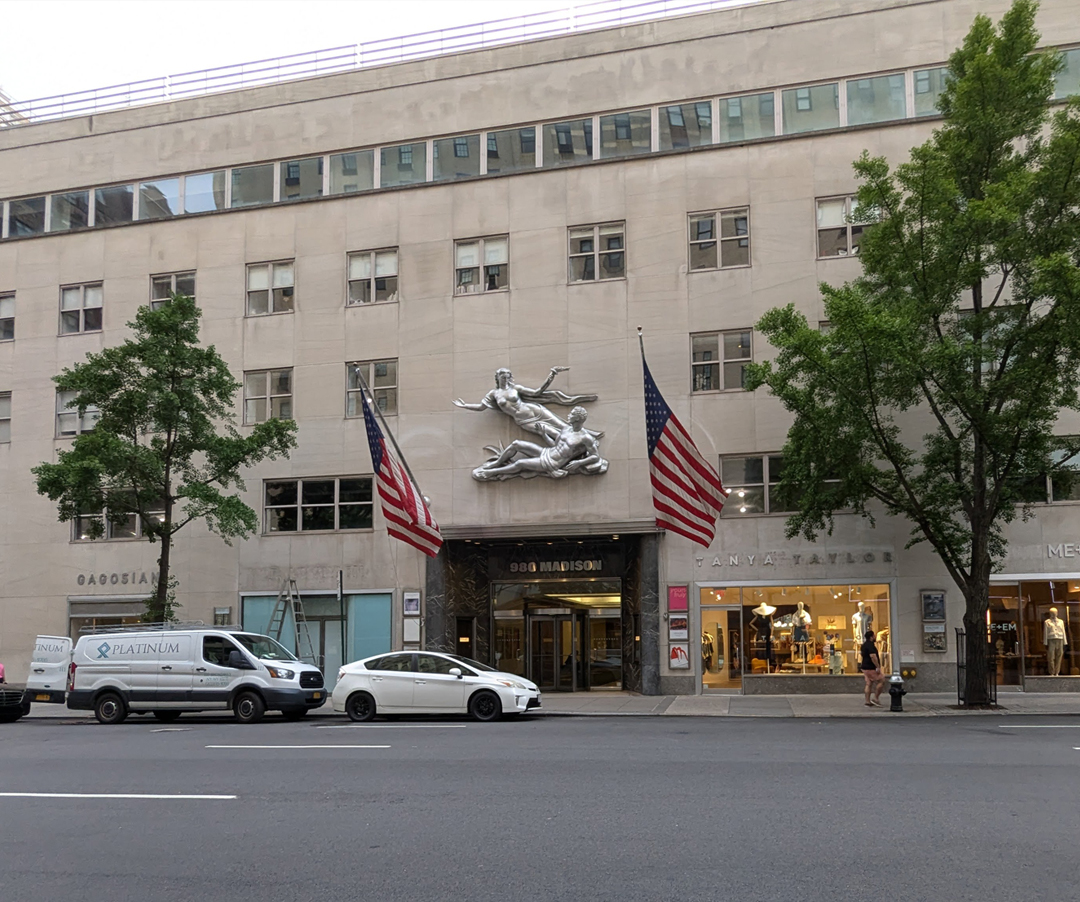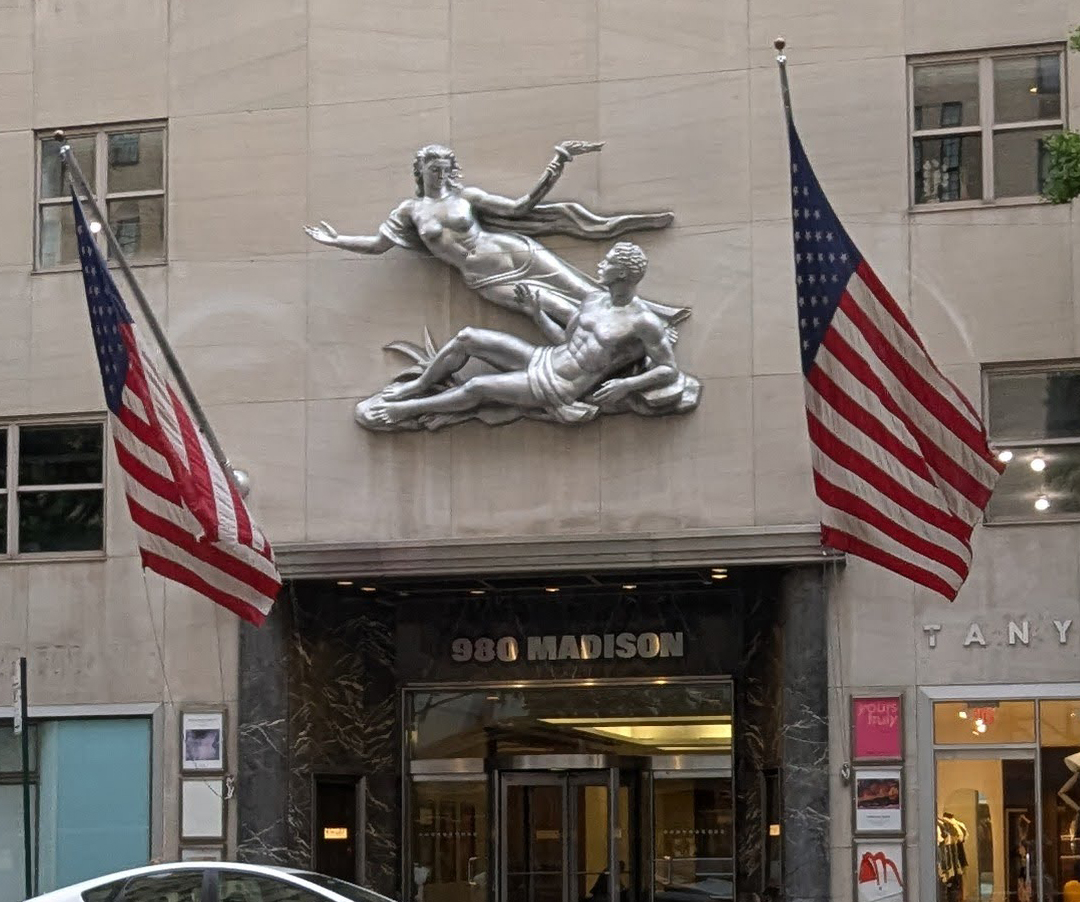
980 Madison Avenue, from its grand opening on November 10, 1949, until its sale in 1987, this iconic location served as the vibrant headquarters of Parke-Bernet Galleries.
Historical Facts:
- Architectural Design: 980 Madison Avenue was designed by the renowned architectural firm Walker & Poor and completed in 1949. The building features a clean, modernist design that harmonized with its Upper East Side surroundings, blending seamlessly with the classic architecture of the neighborhood.
- Headquarters of Parke-Bernet Galleries: From its opening in 1949 until its sale in 1987, 980 Madison Avenue served as the headquarters of Parke-Bernet Galleries, the largest fine art auction house in the U.S. at the time. Parke-Bernet’s success eventually led to its acquisition by Sotheby’s in 1964.
- Cultural Significance: During its time as Parke-Bernet’s headquarters, the building became a hub for the art world, hosting auctions that included works by Picasso, Rembrandt, and other masters. It played a central role in establishing New York as a global art market center.
- Prime Location: Situated in the heart of the Upper East Side, 980 Madison Avenue is steps away from Central Park and renowned cultural institutions such as The Met, The Frick Collection, and The Guggenheim Museum. Its prestigious location made it ideal for elite clientele frequenting the galleries.
- Mixed-Use Purpose: In addition to housing art auctions, the building has also been home to luxury retail and office spaces over the years. In more recent times, it has seen tenants from fashion houses to art galleries, keeping its creative and high-end appeal intact.
- Controversial Redevelopment Plans: In the early 2000s, plans were proposed to dramatically alter 980 Madison Avenue by adding a 22-story glass tower designed by Lord Norman Foster. However, after significant opposition from preservationists, the expansion plan was ultimately scrapped, preserving the building’s original form.
(All pictures by Richard Plehn. Some of the information has been taken from Wikipedia)









